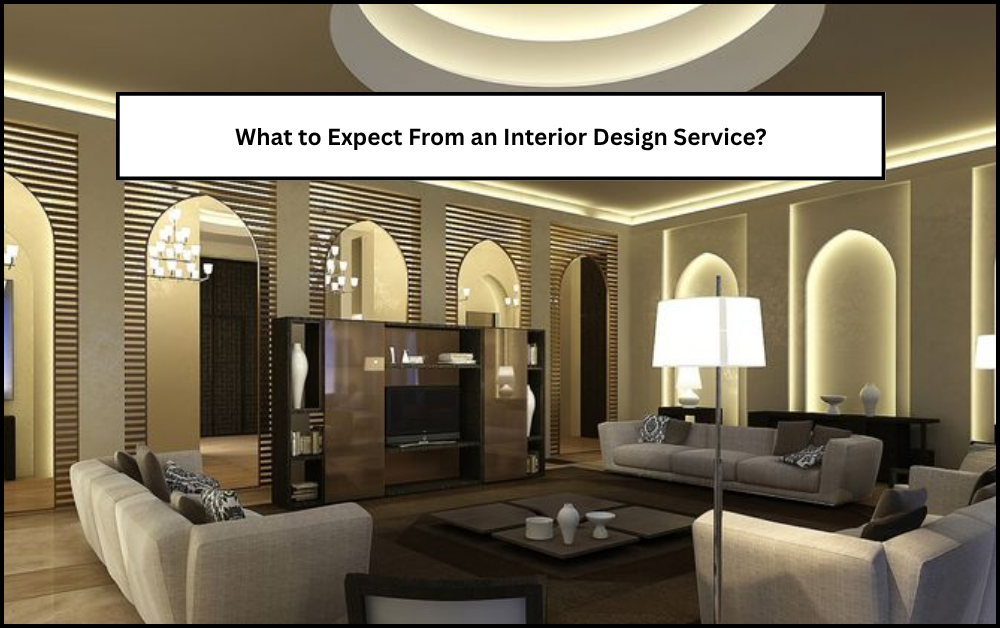
When people think of interior design, images of beautifully styled homes, coordinated color schemes, and elegant furniture often come to mind. However, the process of achieving that flawless look involves much more than just decorating a space. An interior design service offers a comprehensive approach that combines functionality, aesthetics, and customization tailored to the client’s needs. Whether you’re designing your dream home, revamping a commercial space, or enhancing a small apartment, understanding what to expect from a professional interior design service can make all the difference.
In this article, we’ll walk you through the key aspects of working with an interior design firm, from initial consultation to final execution, helping you make informed decisions and get the most out of your design investment.
Initial Consultation and Understanding of Client Needs
The first stage in any interior design project begins with an initial consultation. This meeting sets the foundation for the entire project. During this stage, the interior designer seeks to understand the client’s expectations, personal style, budget, timeline, and the intended use of the space.
You can expect the designer to ask detailed questions such as:
- What are your primary goals for this space?
- Do you have any specific preferences for colors, textures, or styles?
- What is your budget range?
- Are there any existing pieces of furniture or décor you’d like to retain?
The goal is to develop a clear understanding of your lifestyle and aesthetic preferences. The designer may also take preliminary measurements, photographs, and notes on the space during this visit. This step is essential for aligning the design plan with practical needs and expectations.
Space Planning and Concept Development
Once the designer has gathered the necessary information, the next step is space planning. This involves assessing the layout of the area to ensure the optimal use of space, lighting, and functionality. A designer will create scaled floor plans that take into account traffic flow, furniture placement, and functional zones.
In this phase, the designer starts to shape the visual direction of the project. This includes:
- Mood boards with color schemes, textures, and materials
- Preliminary sketches or 3D visualizations
- Samples of fabrics, flooring, and finishes
The concept development process is collaborative. Designers typically present their ideas to the client for feedback and make revisions based on input. This ensures that the final concept reflects the client’s personality while incorporating professional insights and innovations.
Detailed Design and Material Selection
Once the design concept is approved, the designer begins developing detailed plans and specifications. These include technical drawings, material lists, and fixture selections that serve as blueprints for the implementation phase.
During this stage, you can expect:
- Floor and ceiling plans
- Electrical and lighting layouts
- Custom furniture designs
- Selection of materials such as tiles, paint colors, wood finishes, and fabrics
- Coordination with suppliers and showrooms
The designer acts as a guide, helping you navigate countless options and make choices that align with both aesthetics and budget. This stage also includes choosing accessories, artwork, lighting fixtures, and all the small details that contribute to the ambiance of the space.
Note:- The interior design service Dubai was provided with a focus on elegance and space optimization. Every detail had been crafted to meet the client’s vision. Desality Snagging had ensured high-quality results from start to finish. Contact Desality Snagging today for your design needs!
Budget Planning and Cost Estimation
One of the most valuable aspects of hiring a professional interior designer is budget planning. A reputable design service provides a transparent breakdown of all costs involved in the project. This includes labor, materials, contractor fees, furniture, and contingencies.
Designers help in:
- Prioritizing spending based on what’s most impactful
- Sourcing cost-effective alternatives without compromising on quality
- Avoiding costly mistakes due to inexperience or poor planning
Depending on your preferences, the budget may be set at the beginning or refined throughout the project. Designers ensure that your investment is utilized effectively to maximize both aesthetic and functional outcomes.
Project Management and Coordination
Interior design involves more than aesthetics—it requires coordination among various professionals such as architects, contractors, painters, electricians, and carpenters. One of the biggest advantages of using an interior design service is that the designer acts as the project manager on your behalf.
The responsibilities may include:
- Scheduling and supervising on-site work
- Ensuring quality control and adherence to design specifications
- Managing logistics and delivery timelines
- Handling unforeseen issues or delays
This level of oversight is essential, especially in complex renovation projects, as it ensures seamless execution and minimizes stress for the client. Your designer becomes the single point of contact, reducing the need to juggle multiple vendors and tradespeople.
Customization and Personalization of Spaces
An experienced interior designer does not offer one-size-fits-all solutions. Instead, they focus on customization to meet the unique preferences and lifestyle of the client. Whether it’s a custom-built bookshelf, a personalized kitchen layout, or a home office optimized for remote work, the service is designed around you.
Expect the designer to:
- Suggest design elements that reflect your taste and story
- Blend form with function to meet specific living needs
- Provide access to bespoke furniture, textiles, or art pieces
This personalized approach is what elevates the space from being merely beautiful to being truly meaningful and functional.
Sustainable and Efficient Design Solutions
Modern interior design is increasingly focused on sustainability. Many professional services offer eco-friendly solutions that reduce energy use, utilize recycled materials, and promote healthy indoor environments.
Designers may recommend:
- Energy-efficient lighting and appliances
- Non-toxic paint and finishes
- Sustainable or reclaimed materials
- Green certifications or LEED compliance
Not only does this reflect social responsibility, but it also contributes to long-term cost savings and a healthier home.
Final Styling and Staging
The finishing touch in any design project is styling—placing décor, arranging furniture, and ensuring the space feels cohesive and welcoming. This is where the designer’s eye for detail shines.
Final staging includes:
- Placement of rugs, cushions, and accessories
- Styling of shelves, counters, and open spaces
- Final adjustments to lighting and window treatments
At this point, the transformation is complete. The space is fully realized according to the initial vision, polished to perfection, and ready to be lived in or presented to guests or clients.
After-Service Support and Follow-Up
Many top-tier interior design services offer post-completion support. This may include:
- Follow-up visits to ensure client satisfaction
- Handling any touch-ups or corrections
- Advice on maintenance and upkeep of furnishings or materials
Such ongoing engagement shows a commitment to quality and client satisfaction, ensuring that your space remains as functional and beautiful in the long term as it was on day one.
Choosing the Right Interior Designer
While understanding what to expect is crucial, selecting the right interior designer is equally important. Look for designers with:
- A strong portfolio of diverse projects
- Transparent pricing and contractual terms
- Good client testimonials or references
- The ability to communicate and collaborate effectively
A successful interior design project is built on mutual trust and clear communication. When you find the right professional, the entire process becomes enjoyable, inspiring, and rewarding.
Conclusion
Hiring an interior design service is an investment in both the functionality and aesthetic quality of your space. From the first consultation to the final reveal, a professional designer brings creativity, technical expertise, and meticulous project management to ensure that your space is not only beautiful but also uniquely yours.
By knowing what to expect from an interior design service, you can approach the process with confidence, make informed choices, and transform your vision into reality with less stress and greater satisfaction. Whether you are redesigning your home, planning a commercial renovation, or simply enhancing a single room, the value brought by a seasoned interior design professional is unmatched.
For More Insightful Articles Related To This Topic, Feel Free To Visit: Blogpulseguru





